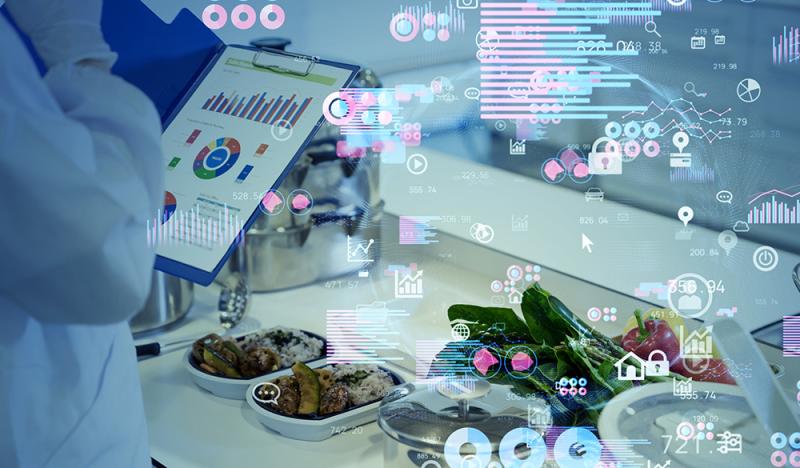Welcome to part five, the final installment of the menu development series. In part one, we went over the 14 fundamental elements of developing an iconic menu; from the ideation stage through to the final testing and sale of your items. In part two, we discussed how to present a menu that’s created for different mediums like print, online ordering, and digital. In part three, we covered simplifying your menu design for improved execution. And in part four, we discussed how to scale your menus for growth and consistency across multiple locations.
By now you should know the 14 fundamental elements to consider when developing an iconic menu; the strategies needed to maximize online, print, and digital menu designs; and finally, how to simplify but also scale your bar or restaurant menu.
There is a true science behind ensuring that your menu is a reflection of your creativity, values, business model, and guests’ desires, and one way to help with that is to have a cohesive tech-stack operating behind the scenes.
The Tech-Stack
Bar and restaurant technology continues to play an increasingly important role in today’s environment with no sight of slowing down. Arguably, technology that’s integrated with your menu programming is quite possibly the most important of them all. The combination of the following systems will push your brand and your menu towards a seamless guest and staff experience while controlling your costs, boosting your revenue, and sustaining a high-level of profitability.
The Point-of-Sale
Having an efficient and robust point-of-sale (POS) system will save time and financial resources while being the foundation for your menu programs’ tech-stack. There is an extensive range of point-of-sale providers on the market all with different offerings aimed at different concepts; from large restaurants down to small cafés or speakeasies.
Systems such as ToastPOS, SilverwarePOS, Touch Bistro, Revel, Lightspeed, and Truffle POS (to name a few) are a great starting point for a variety of concepts. The key is ensuring that it has open API capabilities that can facilitate flexible integrations with other niche providers for marketing, accounting, guest services, payment processing, and of course, your menu.
Menu Management
One of the first integrations to consider is menu engineering and menu management systems that will help streamline your bar and kitchen operations. These systems, such as MarginEdge or Marketman, will provide invoice processing, accounting solutions, inventory management, order management, bill payments, pricing alerts, and full recipe management.
While all of that is important towards your success – let’s dive into three key segments: recipe management, inventory management, and order management.
Recipe Management
When you look for recipe management software, you should understand the importance of managing your food and beverage recipes and choose a system that works for your concept and the number of locations that you may have. Take the time to research, review a live demo, and ask questions with a member of their team.
You want a system that easily stores, retrieves, and organizes recipes, provides a recipe training playbook for your bar and kitchen team, and calculates your recipe costs down to the penny with live updates based on your most recent invoices.
Inventory Management
With the latest technology, you can also take live food and beverage inventory counts whenever and wherever you like, which is quite phenomenal and beats manual entries into those time-consuming spreadsheets that those who have been in the industry for a while are quite accustomed to. At the end of the day, you want an inventory management tool that allows you and your leadership team to easily track waste, theft, and determine inventory quantity and value – all in real-time.

Order Management
Now that you have correct recipes that are tied to your sales and inventory, with the right technology integrations, you can submit purchase orders using the web or a mobile app with items that you want to purchase or fill to par levels all with one click of a button. That is one powerful way to operate and streamline your menu and overall bar and restaurant business.
With these advanced planning, pricing, training, report, and analytic-related tools, you can make faster and smarter decisions for your brand that is based on sales, expenses, purchasing, and menu reports; such as recipe adjustments, actual versus theoretical costs, and gross profit type reports.
Dynamic Pricing
A key term you have likely heard this year is that of “dynamic pricing.”
What is dynamic pricing? It can get quite complex, but the global consulting company, McKinsey, defines dynamic pricing as “the (fully or partially) automated adjustment of prices.”
The term is not entirely new to hospitality. Hotels and the overall travel industry have used modules of the pricing model for years. But for restaurants and even bars, yes, it is something new. As the bar and restaurant industry recovers from the effects of the pandemic, a dynamic pricing model that optimizes revenue opportunities may seem quite attractive.
As solution provider “Juicer” has pointed out, bars and restaurants have always just set their menu prices based on cost. Further, to determine prices on third party platforms for example, restaurants have notoriously marked their prices using a simple flat percentage across the board. Prices should, however, be based on demand. Restaurants should ask, "What is the customer willing to pay?" rather than, "How low am I willing to go?"
This comes down to maximizing your perception of value, understanding your target customer, and integrating a menu management program that will make your menu itself more dynamic.
Dynamic Menus
Taking that mindset, both chain and independent brands should also have a more "dynamic menu," where you can adjust pricing to suit changes through the lens of real-time ingredient cost, day-part strategies, marketing initiatives, labor costs, productivity levels, and even the availability of certain menu items.
Instead of quarterly or seasonal menu price changes, this could be an automated process that is updating your menus once per week or per month to ensure you’re not leaving any money on the table.
This is taking your point-of-sale, inventory systems, order management, inventory systems, and overall menu management system to an entirely new level. This means that your guests are paying an accurate value for each item throughout the day, based on your intended sales mix and contributions, without a loss in margin on your end or negative experience on the guest's end.

In Summary
When you think of adding technology to the menu development process, you want seamless movement of data from front-of-house to back-of-house to consumer-facing ordering processes – whether they’re on- or off-premise.
While you may have fears of surrounding yourself and your operations with technology, the time is now to embrace the future. Over the next 1-5-10 years, operators and customers can continue to expect a dramatic shift in the role of technology within this industry. Take the time now to learn and use these tools that are available to your benefit and in areas that will truly boost your top and bottom line, which is first focusing on your food and beverage menu.
Are you registered for our Crave and Crave on the Menu newsletters? Sign up today!
Plan to Attend or Participate in the 2024 Bar & Restaurant Expo, March 18-20, 2024
To learn about the latest trends, issues and hot topics, and to experience and taste the best products within the bar, restaurant and hospitality industry, plan to attend Bar & Restaurant Expo 2024 in Las Vegas. Visit BarandRestaurantExpo.com.
To book your sponsorship or exhibit space at the 2024 Bar & Restaurant Expo, contact:
Veronica Gonnello (for companies A to G) e: [email protected] p: 212-895-8244
Tim Schultz (for companies H to Q) e: [email protected] p: 917-258-8589
Fadi Alsayegh (for companies R to Z) e: [email protected] p: 917-258-5174
Also, be sure to follow Bar & Restaurant on Facebook and Instagram for all the latest industry news and trends.
